The Conquerors are Conquered
Portugal was under Spanish rule for 60 years, until a popular uprising against the Habsburgs put the country back in charge of its own destiny.
Throughout their rule over Portugal, the Spanish Habsburg kings faced many challenges to their authority. Not the least of their problems was that Sebastião kept rising from the grave. After the massacre at Alcácer-Quibir in 1578, a devastating blow to national pride, there arose a popular belief, known as sebastianismo, that the lost Portuguese king would rise again. Consequently, a number of false Sebastiãos tried and failed to reclaim the throne.
At the root of the Iberian Union was the support it provided for merchants and traders. The Netherlands and France were strongly challenging Portuguese shipping, slicing into vital profits. In any case, there were few options: in 1560 the Casa da India, the national trade corporation, had gone bankrupt and Portugal’s treasury was empty.
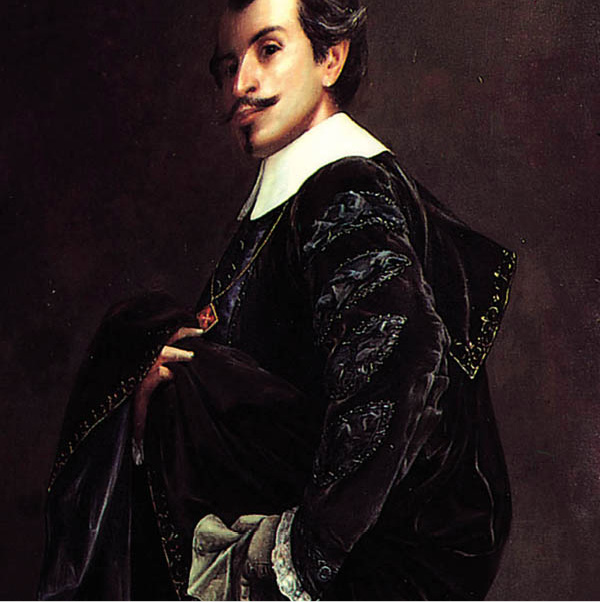
Antão de Almada, one of the movers and shakers of the Restoration.
Museu Militar, Lisbon
The three Filipes
After Alcácer-Quibir, a number of candidates had aspirations to the Portuguese throne. Though the genealogical claim of Felipe II of Spain was more tenuous than those of his competitors, he was the grandson of Manuel I and a far more viable ruler than his rivals. The majority of the populace was opposed to the Spanish king, but the relatively impoverished nobles, clergy and upper bourgeoisie saw that Felipe could provide fiscal and military stability. Ironically, the most powerful group to resist the union was the Spanish ruling classes, who saw the danger of untrammelled Portuguese trading within their traditional markets.
It was supposed by the bourgeoisie that by combining Spanish and Portuguese interests, the maritime empire could be reclaimed, while the “alliance” would also open up inland trade.
Part of Felipe’s appeal was that he promised to maintain Portugal’s autonomy: no Spanish representation in Portuguese legislative and judicial bodies; no change in the official language; the overseas empire would still be ruled by Portugal; no grants of Portuguese assets to non-Portuguese; and so on and so forth. Felipe took up residence in Lisbon. In 1581 he summoned the cortes to declare him King Filipe I.
After the years of mismanaged government, the efficient bureaucracy of the union was a relief. However, with the succession of Felipe II (Felipe III of Spain) in 1598, the Spanish began to press their powers too far. The new king lacked his predecessor’s diplomatic savvy, relations between the two countries were bungled, and the Spanish tried to correct their mistakes through force. Resistance grew. Under Filipe III (IV of Spain), who succeeded to the throne in 1619, the union continued to erode. Spain was weakened by the Thirty Years’ War with France. Portuguese troops were forced into battle and taxes increased.

Engraving of the fall of Lisbon into Spanish rule (1580).
Corbis
The 60 years of union with Spain did nothing to protect Portugal’s empire. Between 1620 and 1640, Ormuz, Baia, São Jorge da Mina and many more trade centres fell. In 1630 the Dutch established themselves in Brazil; in 1638 they took Ceylon. There were still ports and territories controlled by Portuguese traders, but the monopoly of the seas was an era quickly fading from memory. What’s more, to a country that had once been intent upon ridding the earth of the last vestige of the infidels, it was devastating to surrender their missions to the Dutch, purveyors of heretical Protestantism.
For the Portuguese, each of the three Filipes was worse than his predecessor. Filipe II did not even deign to visit the country for years after his coronation. Filipe III systematically breached all the guarantees put in place by his grandfather. The incipient revolution was aided by secret diplomatic agents sent by the French, who were still embroiled with Spain in the Thirty Years’ War.
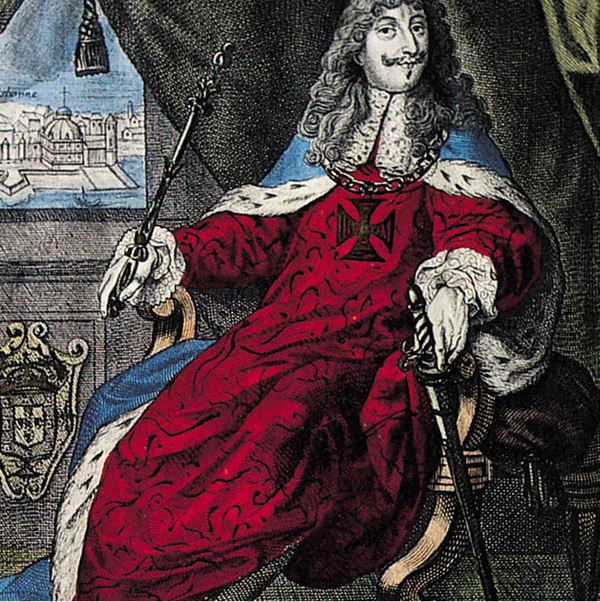
Pedro II, a more effective king than his brother.
Museu da Cidade, Lisbon
The Bragança regime
On 1 December 1640, a coup in Lisbon reflected the growing revolutionary fervour. The palace was attacked, and the reigning Spanish governor, the duchess of Mantua, was deposed and arrested, while her strongman, Miguel de Vasconcelos, was defenestrated. Though reluctant to lead the revolt, the Duke of Bragança was declared King João IV. So began Portugal’s final royal period: the House of Bragança would hold power until the 20th century.
Most of João IV’s 16-year reign was occupied in hapless efforts to form diplomatic ties in Europe. France, England, Holland and the pope all refused to confirm Portuguese independence. Only Spain’s preoccupation with other battles, some heroic Portuguese military stands along the frontier, and a well-organised national administration enabled the country to retain its restored independence.
When he ascended the throne in 1656, Afonso VI (João’s son), who suffered both physical and mental handicaps, was still a minor. Later, married off to a French princess, he associated with criminal elements and, worst of all, proved to be impotent, a fact elicited from the public inquiry needed to annul his marriage. He was eventually usurped by his brother, who ruled as Pedro II.
War with Spain waxed and waned from 1640 until 1665. In 1654, a treaty of friendship and cooperation was signed with England, a useful link, but also the first step down a path that guaranteed Portugal’s economic subservience to Britain for centuries to come. The alliance was sealed by the marriage of Princess Catherine to the English king, Charles II, in 1662. Included in her dowry gifts were Tangiers and Bombay. In 1661 a treaty was signed with Holland. These moves sparked a new round of battles with Spain. In 1665 a decisive Portuguese victory at Montes Claros ended the fighting and three years later, in the Treaty of Lisbon, Spain offically recognised Portugal’s independence.
Pedro II became prince regent to his brother in 1668 and ruled from 1673 until 1706. His long reign, although stable, was deeply marked by an unrelenting economic depression. The spice trade had slipped almost entirely out of Portuguese hands, while trade in sugar and slaves went through periods of competition and crisis at a time when Portugal could ill afford such instability.
On the mainland, olive groves and vineyards offered good profits, but they were largely controlled by English interests. The Treaty of Methuen (1703) established English dominance of the wine industry and served to stifle industrialisation in Portugal. Grain shortages were common throughout the era – perhaps because investment went into vines instead of wheat.
Two of Pedro’s finance ministers, the Count of Ericeira and the Marquês of Fronteira, helped plan numerous factories. Glass, textile, iron, tile and pottery industries were all supported by the state in an effort to balance trade deficits.
Going for gold
The mercantilist approach made some headway, but what finally dispelled the economic gloom was the discovery of gold in Brazil. But the constant stream pouring in from across the Atlantic was not invested in the infant industries, which spluttered and halted. The Count of Ericeira committed suicide, while Fronteira renounced his previous economic philosophy.
Even before gold, Brazil had offered a number of valuable commodities: sugar, cotton and tobacco, as well as some spices and dye-stuffs. The husbandry of cattle started slowly, but by the end of the 17th century was providing lucrative exports of meat and leather.
The Jesuit missionaries were extremely influential in Brazil, as both explorers and settlers. Among other things they held the brazilwood monopoly for over two decades (1625–49). More importantly, they were successful in winning over the native populace to Christianity, and in large part preventing their enslavement. But the abundant colonial economy naturally had a great need for native labour, and the Jesuits were pressured to step aside, even though they had the clear support of Rome in the form of a papal bull (1639) that threatened excommunication for the trading of natives.
Restoration Day on 1 December is still celebrated in Portugal as a national holiday to commemorate the 1640 coup in Lisbon.
João V, who succeeded Pedro II in 1706, spent the Brazilian gold with a vengeance. Taking his cue from the French court of Louis XIV, he quickly earned the nickname “The Magnanimous’’. Palaces, churches and monasteries were erected, and support was granted to the arts and to education. Along with this extravagance came a moral profligacy. Convents around Lisbon were converted from religious houses into aristocratic brothels. Among the royal constructions were palaces to house João’s numerous bastard sons, born of various nuns.
When João died in 1750 he was succeeded by his son José, who proved to be more interested in opera than in matters of state. The full power of the crown was entrusted to a diplomat, Sebastião José de Carvalho e Melo, who eventually earned the title by which he is better known: the Marquês de Pombal.
Enlightened absolutism, as typified by the ministry of Pombal, represented both a beginning and an end. The Enlightenment ideal of rationalism meant a leap towards modernity, while the concomitant republican ideal of social equality meant royal absolutism was on its last legs. Pombal’s insistence on exercising royal prerogative sounded a death knell for the political power of nobles and clergy alike, and allowed the bourgeoisie to take over administrative and economic control. His was an oppressive, dictatorial rule, though he was careful never to claim any personal power.
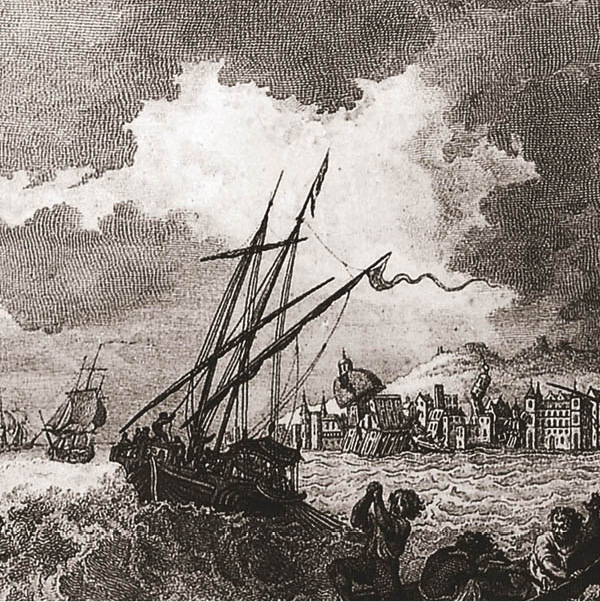
A scene in Lisbon harbour during the Great Earthquake of 1755.
Museu da Cidade, Lisbon
The great earthquake
In 1755, on All Saints’ Day – just as Mass was beginning – Lisbon was destroyed by a massive earthquake. At least 5,000 people were killed in the initial impact, many while attending morning services. Many more died later. Fallen church candles quickly ignited the wreckage around them. Survivors rushed towards the safety of the Tejo, only to be met by a huge tsunami.
In the subsequent weeks infected wounds, epidemics and famine increased the death toll, which may have been as high as 40,000. The Jesuits tried to fix the blame for what they saw as divine retribution upon Pombal’s wayward and “atheistic” policies. He weathered both their criticism and their plot to assassinate him. The Jesuits’ power throughout Europe was dissolving, and in 1759 they were officially disbanded and exiled from Portugal.
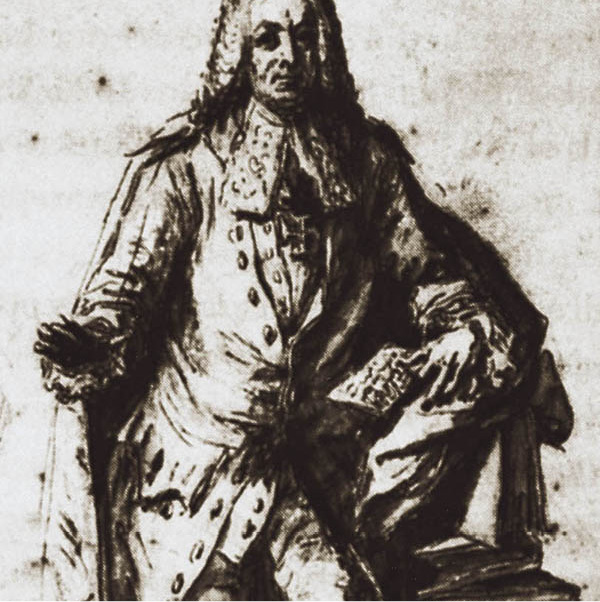
The Marquês de Pombal, an enlightened despot.
Museu da Cidade, Lisbon
The catastrophe that shook the country’s faith allowed Pombal’s policies of secularisation and rational government to take firm hold. He took absolute control, and with the order to “close the ports, bury the dead, feed the living’’, began reconstruction. José granted his minister emergency powers (which were not rescinded for some 20 years) and Pombal used them to rebuild Lisbon according to a neoclassical plan, both neatly geometric and functionally sound. The social and legal distinction between “Old” and “New” Christians (the latter being Jews who had converted at the end of the 15th century) was abolished. Pombal’s economic reforms helped Portugal remain stable when Brazilian gold production waned in the middle of the century and he managed to rebuild Lisbon without depleting the treasury.
As Pombal’s sponsor-king, José, neared the end of his reign, the Marquês plotted to force the crown princess Maria to renounce her rights so that her son, another José, and a disciple of Pombal, could continue the policy of despotism. These efforts failed and Maria, a pious but unbalanced woman with no sympathy for Pombal’s methods of rule, took over in 1777. She immediately had Pombal tried for crimes against the state and, when convicted, confined him to his estate rather than to prison, out of deference to his age.
Though she revived religious elements in a government and culture that had become increasingly secular, Maria allowed most of Pombal’s essential economic and administrative reforms to stay in place. Her reign was a conservative one, with steady, if slow, economic progress. Both her political and personal health were badly shaken by news of the French Revolution. In 1798, long after her behaviour had become an embarrassment, she was declared insane. Her son João, an awkward, nervous man, took over as regent, becoming king after Maria died in 1816.
Pombal’s Legacy
Anyone visiting Lisbon should know a little about the Marquês de Pombal, to better appreciate the city. Under his direction, the whole of the devastated Baixa area was rebuilt in neoclassical style, laid out in an orderly grid system. The upper parts of the city – the Bairro Alta and Alfama – had been spared the worst effects of the tremors. In the centre of the great Praça do Comercio he erected a statue of his king, José, astride his horse. Pombal’s own statue was erected much later, on a column in the square that bears his name, and looking out over the new city which, under his guidance, rose like a phoenix from the ashes.
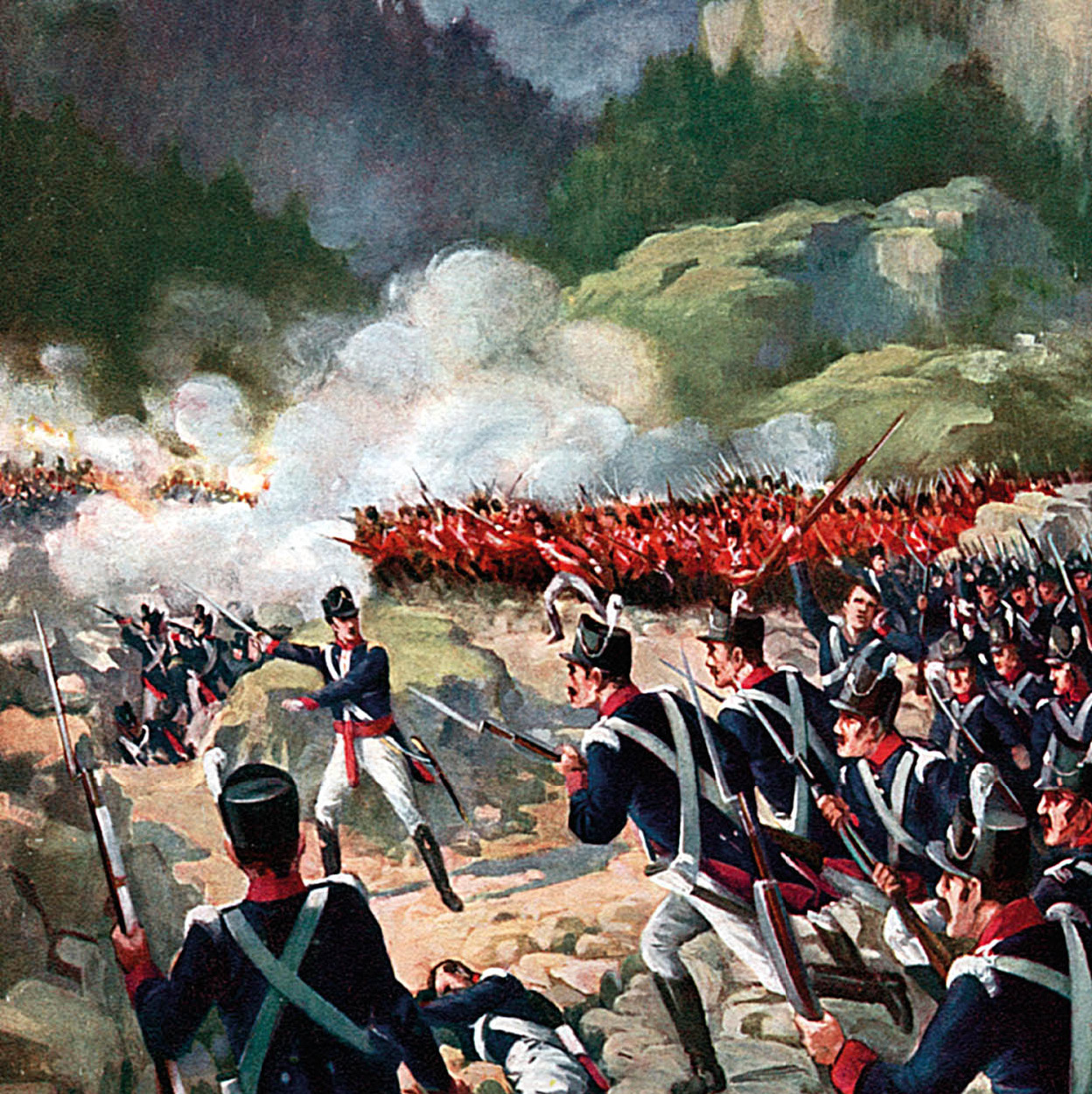
British and Portuguese troops commanded by the Duke of Wellington repulse Napoleon’s army.
Corbis
The Peninsular War
The Portuguese monarchy and nobility feared that the fervour behind the French Revolution of 1789, and, to a lesser extent, the American one the previous decade, might be contagious. They were particularly wary about possible insurgency in Brazil. In 1793, Portugal sent troops to fight revolutionary France, further aligning itself with Britain and against French-controlled Spain. In 1801, Spain invaded in the War of the Oranges. Portugal ceded various political concessions, and lost forever the town of Olivença.
In 1807, Napoleon delivered an ultimatum to Portugal, in which he demanded that Portugal declare war on Britain and close its ports to British shipping. But Portugal could not turn on its long-term allies, and Napoleon was defied. While the royal family speedily sailed to the safety of Brazil, the French General Junot marched into Lisbon. Initially, the Portuguese Government offered no resistance.
In July 1808, Britain came galloping to the rescue under the leadership of the master military tactician, Sir Arthur Wellesley (1769– 1852), who became the Duke of Wellington. The Peninsular War, sometimes called the War of National Liberation, lasted two years, expelling the French but devastating the country. Three waves of attacks were halted by Portuguese victories at Roliça, Vimeiro, Buçaco and the famous Lines at Torres Vedras. The wars left the country in a rocky state. Since the flight of the royal family, Portugal’s capital was effectively located across the ocean in Rio de Janeiro and the nation’s general weakness fostered Brazil’s claims for autonomy. In 1822 Brazil was declared a kingdom on an equal footing with Portugal.
The regency in Lisbon showed very little political intelligence or common sense, governing with uncoordinated despotism and completely ignoring the burgeoning democratic groundswell. The monarchy’s blindness to contemporary political ideas fostered the revolution that would break out in 1820.
The British military occupation, under the leadership of Marshal William Carr Beresford (1768–1854), although necessary and sometimes appreciated, further undermined Portuguese self-determination. British control had been growing throughout the 18th century. In the 19th, it became stronger. In 1810, Portugal was forced to cede to Britain the right to trade directly with Brazil, eliminating its own role as middleman. Portugal was taking on the aspects of a British protectorate, with William Beresford wielding dictatorial control.
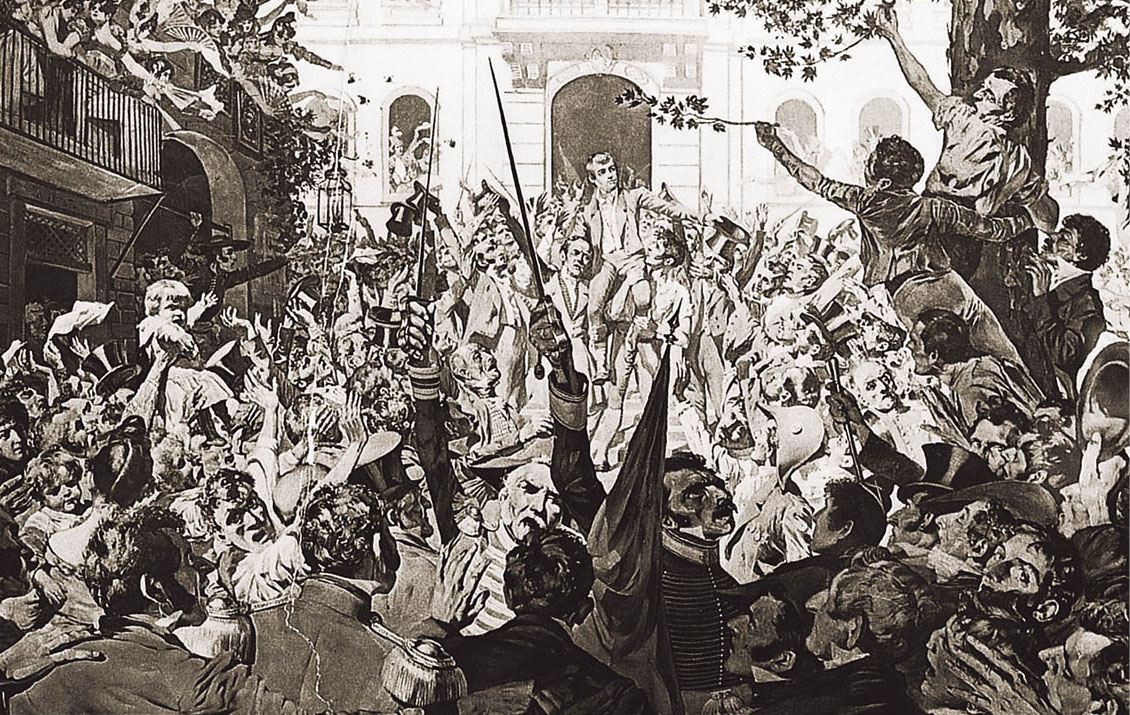
Citizens rallied in the streets for the liberal revolution of 1820.
Biblioteca Nacional, Lisbon
The liberal revolution
The roots of the liberal uprising of 1820 lay in the French Revolution, its influences disseminated by military and secret societies, especially a Masonic lodge called Sinédrio. A plot against British rule by one of these clandestine groups proved to be a catalyst. A dozen conspirators accused of plotting to assassinate Marshal Beresford in 1817 were summarily tried and executed, a brutal reprisal that heated Portuguese resentment and fostered support for the liberal movement.
In 1820, the Spanish liberal movement won control of their government, providing further inspiration, as well as political support, for Portuguese liberal forces. When Beresford left for Brazil on a diplomatic mission to discuss the growing problem, his absence sparked the Portuguese military into revolt. The uprising began in Porto, and eventually forced João VI to return from Brazil. By the time he arrived, the new constitutional ideology had gained ground. A constitution was adopted in 1822. The document was ahead of its time, with broad guarantees of individual liberties and no special prerogatives for nobles or clergy. It lasted only two years, but succeeded in ending the Inquisition.
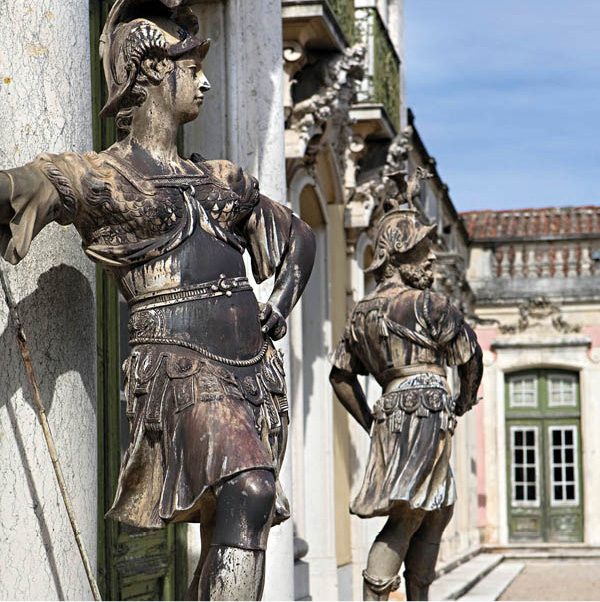
Lisbon’s Queluz Palàcio.
Lydia Evans/Apa Publications
Conspiracy and confusion
Portugal’s profoundly conservative streak made the revolution a simple split between republicans and absolutists. New charters and new efforts to restore full-bodied monarchy kept the country unsettled throughout the first half of the century. In 1824, João VI resisted a conspiracy of royalist extremists led by his own wife Carlotta and his son Miguel.
João’s queen was the Spanish princess Carlotta Joaquina, who epitomised the old regime. Her flamboyant leadership of the absolutist cause made her popular, but the failure of her conspiracy to dethrone her husband in favour of her son Miguel – who was then banished to live in Brazil – marked the end of her influence.
Carlotta Joaquina tried her best to make a Versailles of her palace at Queluz, surrounding herself with absolutists and, outrageously, decadently producing children by various lovers.
The politics of the next 50 years were endlessly complex. In 1826 João VI died, leaving the throne to Pedro, his eldest son, who was still in Brazil. After failing to unite the two kingdoms, Pedro chose to stay in Brazil, abdicating the Portuguese throne to his seven-year-old daughter, Maria. Pedro intended her to marry her uncle, the exiled Miguel, who would rule as regent under a moderate constitution. Miguel had other ideas. Upon his return he abolished the constitution and invoked a counter-revolutionary cortes to name him king. There was considerable popular support for these moves, but enough sympathy for constitutional ideas remained for Pedro, who had abdicated power in Brazil, to return and eventually defeat his brother in the Miguelist Wars.
Pedro IV reigned until his death in 1834, when his daughter, then aged 15, finally took the throne as Maria II. She reigned until 1853, during which time the first political parties developed. The liberals, victorious over absolutism, divided into conservatives and progressives. The Septembrists, named after their revolutionary victory in September 1836, came into power first. They initially restored the constitution of 1822, but then adopted a more moderate one. They were opposed by Chartists who took their stand, and name, from the conservative charter of 1826.
The Chartists came to the fore in 1839, when, supported by the queen and led by António da Costa Cabral, they took power. Costa Cabral’s government was authoritarian, and, though it provided stability, became more and more corrupt and autocratic. In 1846 a popular uprising demanded his downfall. Maria II tried to replace him with the equally conservative Duke of Saldanha, a grandson of Pombal, and the country stood on the brink of civil war. English and Spanish intervention prevented mass violence, but resulted in Costa Cabral being returned to power. In 1851 he was (peacefully) ousted for good and Saldanha took his place.
The early period of Saldanha’s rule was a period of transformation out of which came the political divisions that would exist throughout the century. Saldanha introduced a compromise that allowed his new party, Regeneração, to encompass both the old Chartists and the moderate progressives. The amendments to the constitution allowed for direct elections and an expanded electorate. A still more radical faction, initially a small group, became known first as the Históricos, and then the Progressistas.
In 1853 Maria II died in childbirth. Her husband, the German duke Ferdinand of Saxe-Coburg-Gotha, ruled as regent until their son, Pedro V, came of age in 1855. Pedro died six years later and was succeeded by his brother, who became Luís I.
Literary Luís
The best constitutional monarchs are those who avoid politics, and the change from the meddling Maria to the literary Luís was a clear victory for the republican government. Among his other accomplishments, King Luís translated Shakespeare into Portuguese.
Arts and literature were greatly influenced by politics during this period. The energies of both liberal and conservative intellectuals were focused on rebuilding their nation. The best Portuguese prose was in essay form, the best poetry and drama was in satire, and historical writing flourished. Among the celebrated literati of the era were Alexandre Herculano (1810–77), who wrote historical fiction and a monumental history of Portugal; and the brilliantly versatile Almeida Garrett (1799–1854), best known for his drama, but also the author of poetry, novels and essays.
The reign of Luís lasted until 1889 and was a period of relative peace. Conservatives and liberals alternated in controlling the legislature. Portugal’s external affairs were more or less dictated by Britain, their protector under the Congress of Vienna’s partitioning of small countries under major powers, in 1814–15. But Portugal was tenacious in holding on to many of its colonial claims and territories in Africa. The high expense of maintaining those colonies was a burden on the rickety national economy, but it would stand the country in good stead when the holdings finally did pay off during the 20th century.
Cultural Questions
The influence of the rest of Europe on Portugal’s cultural development in the 19th century was strongly felt. Intellectual conflicts were encapsulated in the “Coimbra question”. Two groups of university scholars stood divided: the older group advocated the virtues of the status quo, while the “Generation of 1870”, as they became known, called for revision of intellectual and spiritual values. Like their European counterparts, they were rationalist, anti-clerical and anti-monarchist. In their writing could be heard the first strains of emerging socialism. Their daring critiques, however, were suppressed by the government in 1871.